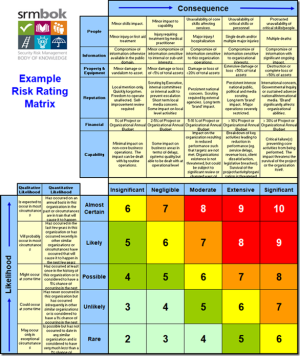Originally posted on May 4, 2018 @ 10:36 AM
Chronic Unease is Not Enough

What is not present in the enthusiasm to grab for yet another simple silver bullet for Safety in the complacency challenge is any discussion on: intuition, the unconscious, the collective unconscious, the social psychology of habit, the psychology of addiction, definition of ‘human mind’, the psychology of perception, knowing, personhood, culture, social influence, semiotics, automaticity, human ‘being’, the nature of heuristics that creates overconfidence, arationality and the fallibility paradox. What a remarkable set of factors to ignore!
Chronic unease is often described as ‘discomfort’ or ‘instinctive wariness’ associated with undertaking a task (https://www.centreforsafety.com.au/research/chronic-unease-state-mind-managing-safety). Chronic unease is sometimes explained as the ‘opposite of complacency’ which of course it isn’t (http://www.risktec.tuv.com/knowledge-bank/technical-articles/chronic-unease—the-hidden-ingredient-in-successful-safety-leadership.aspx). In some cases chronic unease is described as skepticism. The five simple dispositions for chronic unease are: vigilance, worry, pessimism, requisite imagination (yuk Elliot Jacques) and flexible thinking. It is also unfortunate that many wrongly associate the notion of ‘chronic unease’ with Weick’s Collective Mindfulness.
Most of the literature on ‘chronic unease’ is associated with individualism, cognitvism, mechanism and behaviourism. This worldview understands that humans can choose ‘chronic unease’ in the space between stimulus and response. Most of the language associated with ‘chronic unease’ places emphasis on choice, zero harm, swiss cheese, bow tie and individual will. Discussion is often binary quoting Kaheman’s silly notion of the fast and slow brain. Such discussion is remarkably naïve and ignores all the evidence in social psychology that understands decision making as socially situated and often contradicts itself (https://www.youtube.com/watch?v=I5ORFsf3QpQ). The language is remarkably shallow and simplistic. So, if one can’t ‘turn on’ chronic unease by choice you have a problem if you chose unsafey.
Chronic unease is described in the language of mindfulness and ‘technique’ to manage cognition yet the basis for efficiency in work is not thinking. The very foundation of efficiency is the development of heuristics. Heuristics are mental shortcuts and habits we form so that we can undertake tasks without thinking. It is important to not confuse this chronic unease sense of mindfulness with either the work of John Kabat Zinn or Karl Weick. The Safety notion of chronic unease has more in common with wishful thinking than the realities of human judgment and decision making (https://www.humandymensions.com/product/risk-makes-sense/).
Rationality takes time, efficiency requires the suspension of rationality to enact actions by hope, faith and trust in heuristics.
Making decisions by heuristics or automaticity has nothing to do with irrational thinking as supposed by Daniel Ariely (Predictably Irrational) but rather ‘arational or non-rational thinking’. If I have faith and trust in someone or hope that things will go well, I am not being irrational or stupid. Non-rational thinking is situated between rational and irrational thinking in a dialectic that is more associated with intuition and tacit knowing (Polanyi). Tacit and implicit knowing is a critical part of human decision making and stands apart from any binary notion of fast and slow thinking. It is much more helpful to understand the process of human decision making as triarchic and dialectic (https://vimeo.com/106770292 ).
One Brain Three Minds from Human Dymensions on Vimeo.
What is it that people actually do to be mindful? What forces do they deny and what actions do they apply? If chronic unease is a cognitive state, what about all the other disciplines in psychology that demonstrate that forces both social and collective are necessary for human functioning to create confidence in the face of risk. What social forces influence complacency?
Risk is: ‘The uncertainty associated with human action and the trust and faith required to suspend uncertainty to take that action’. Complacency is ‘misjudged faith’ not some mysterious state where someone doesn’t care? Indeed, the language of ‘be careful’ and ‘be alert’ is mostly meaningless. So telling someone to ‘be more careful’ or ‘be alert’ is often nothing more than an expression of affection and positive orientation towards another. Unfortunately, such expressions don’t actually help or give you any idea of what one should do. It is simply comical that one can use a risk matrix and get a high risk down to zero by being ‘more careful’ or ‘more alert’, even if one thinks the chronic unease five factor model provides some indicator of what to do.
The more Safety treads down the path of simplicity in understanding human decision making the more it is going to be disappointed. Let’s just explore one factor in the many that are ignored by Safety when it considers ‘chronic unease’.
Something is a habit when it becomes aRational, when it is no longer sensitive to reward and is undertaken automatically. Habits are formed when one stops thinking rationally about what one is doing. Habits are heuristic. We can have good habits like putting on a hard hat without thinking or bad habits like lighting up a cigarette without thinking. Habit formation shares a great deal in common with the psychology of addiction and the social psychology of automaticity. If you have to deliberate about an action then it’s not habitual. Social context ‘primes’ habit.
There is no cognitive turning ‘off’ or ‘on’ when it comes to habit. So how does one ‘turn on’ chronic unease when working efficiently and habitually desires heuristic thinking and decision making in automaticity? Unless there is some consideration for a host of factors currently omitted in the chronic unease silver bullet it is not likely that things will improve.



Do you have any thoughts? Please share them below